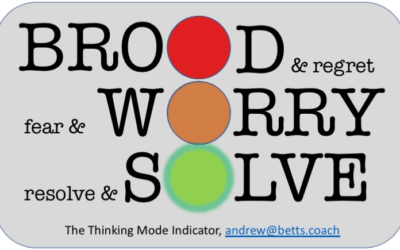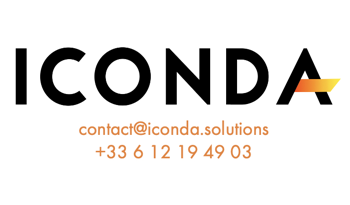Nowadays, classroom-based professional training is all about learning activities – labs, simulations, role plays, serious games, and so on. Over the past ten years, I would say, there has been a major shift away from subject matter lectures towards experimentation and coaching (the business of acquiring information and theory tends to be done online wherever possible).
As well as a place for experimentation, classroom training also provides great opportunities for team building. Of course, company events can be dedicated solely to team building and, in this context, you may be handcuffed to your colleagues in a dark room, swung on a rope across a cold stream or dropped from a high bridge at the end of a piece of elastic. Great fun but, from the sponsoring organisation’s point of view, is it as effective as working together on tasks a little closer to home? They can be fun too, if well designed.
After a Customer Communication training for a mixed Teledyne ICM and DALSA team – two companies, five languages and at least six countries were represented by the 14 participants – Julien Lumaye, ICM‘s Director of Sales and Marketing, commented: “When Andy challenged me to define the training objectives a few months ago, I realised that team cohesion would be an important goal and I’m pleased to say that the development of the team was one of the most successful aspects of the event.”
To give some details of how this was achieved, here is an example of a negotiation exercise that:
· Challenges participants to think differently
· Introduces a process that is easily transferrable to real life
· Is self-regulating and can be readily adapted to an infinite number of negotiation scenarios (any product or service, sales-oriented or not)
· Is great for team building!
Suppose that trainees have just learnt something about negotiation preparation (online or in class). The trainer starts by describing the negotiation scenario.
For example, in the course for Teledyne mentioned above, I wrote a one-page proposal that was supposed to have been sent to a customer and which now had to be discussed, modified and agreed with them. I put myself in the position of “the boss” and asked the class, divided into groups of four or five, to develop a negotiation plan that we could then review together.
The purpose of the exercise is to strengthen the team’s ability to prepare negotiations – to clarify objectives, foresee what could come up and develop ideas on how to react. Though we don’t simulate the negotiation itself, the preparation process is somewhat confrontational and this ensures that potentially difficult issues are raised.
“Fortune favours the prepared man”, as Louis Pasteur once said. I therefore stress my confidence in the ability of participants to negotiate effectively with their customers once they have built up their own confidence through the preparation process.
Each group divides into “contributors” – the people that helped build the proposal and will negotiate with the customer – and “reviewers” – experienced colleagues who will look at the proposal from the customer’s standpoint.
Using a simple table of key points to consider, each sub-group first prepares their negotiation position.
They receive a few pieces of background information to guide their work so that, for example, “contributors” may be encouraged to focus on achieving a “safe” deal, avoiding product variants and delivery schedules that could be hard to meet. “Reviewers”, on the other hand, could be told to take a “drive the price down” stance or an “I want it all, yesterday” position. Whatever the combination, the result of bringing the two viewpoints together is always interesting, and this is what happens next …
In the second phase, the groups reunite and “contributors” and “reviewers” compare and contrast their views of the negotiation. Based on this lively exchange, they then update the “contributor’s” plan.
Finally, a couple of group representatives meet with “the boss” to present and discuss the plan. This is done in front of the whole class so that learning points can be identified and discussed.
The process is “benevolently adversarial”, temporarily placing colleagues in confrontational positions in order to tease out issues that could arise in discussions with the customer.
It’s also a practical process that can be used to prepare real negotiations. It does not necessarily involve any role playing though, on the Teledyne training, one group chose to do this. Either way, it would be quite reasonable for a manager to ask his team to prepare a customer meeting using the process described above.
One of the reasons why this can make sense is that the exercise is self-regulating – its success depends mainly on the process and the group dynamic rather than the subject matter supporting it (i.e. the “proposal” and the guidelines for each sub-group). A manager can therefore be confident that it will produce worthwhile results.
Finally, it is great for team building since it:
· Allows colleagues who would not otherwise work directly together to do so in a meaningful way and to share any resulting successes.
· Places team members in confrontational positions with a very low risk of conflict(since everyone shares the same ultimate goal of producing a robust negotiation position). It therefore provides excellent practice for effective intra-team communication.
· Has a real, business-related purpose, as well as being fun. It is therefore doubly motivating for participants.
If customer communication is important to you and your team, you may also be interested in these short articles on the ICONDA website. And if you have specific training or team building needs – an event coming up where these kind of activities would be valuable, for example – then please get in touch.






